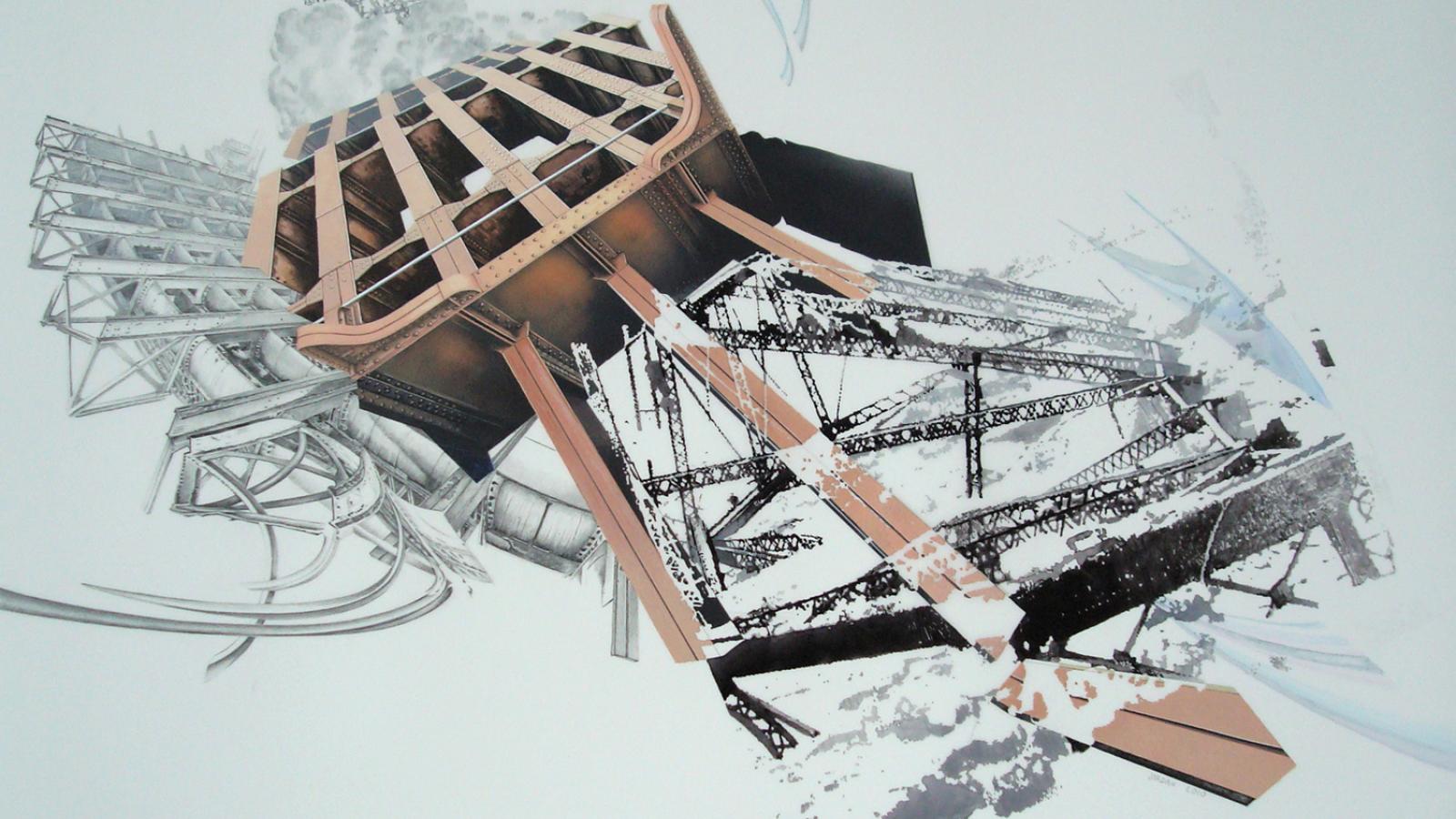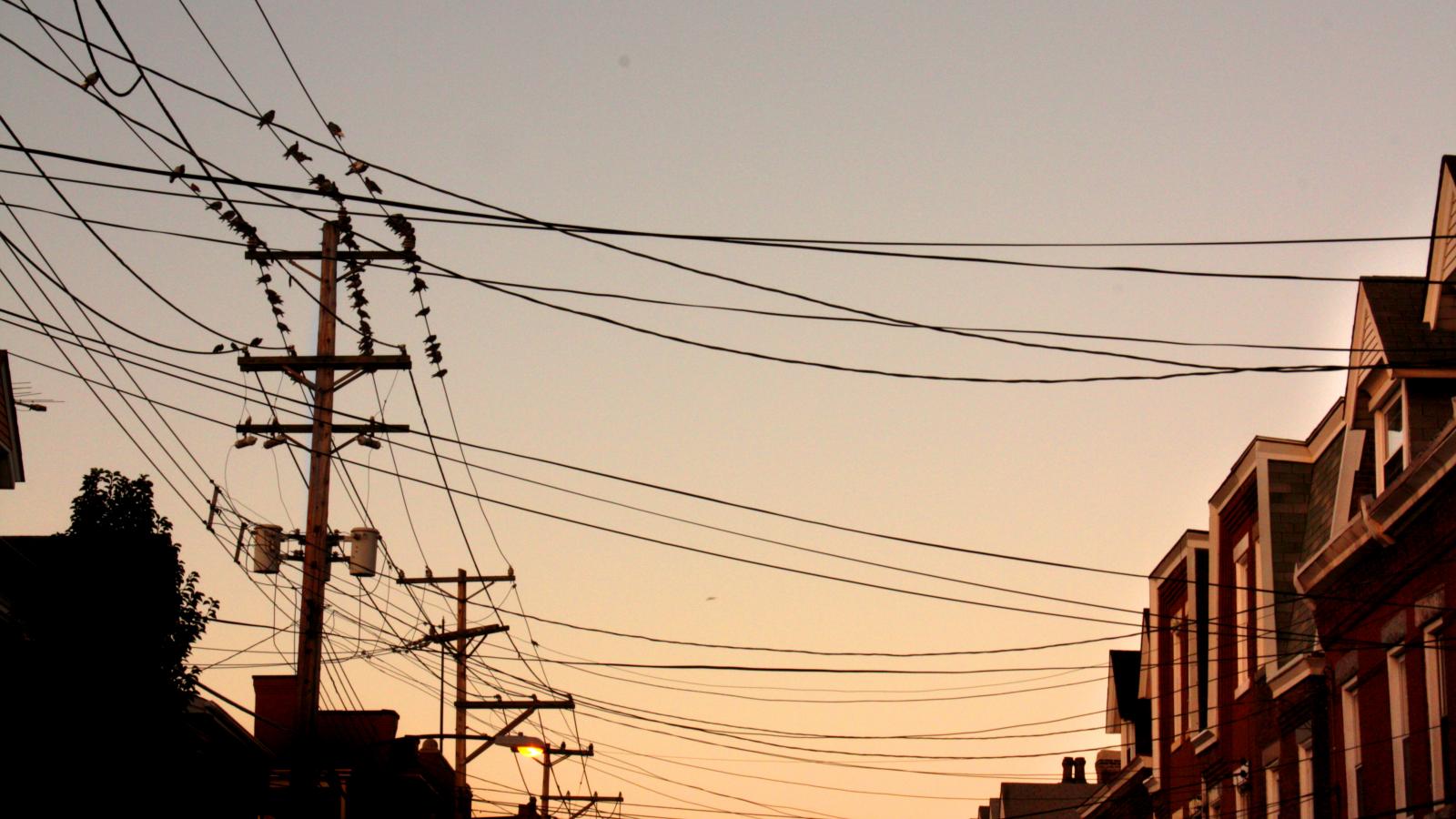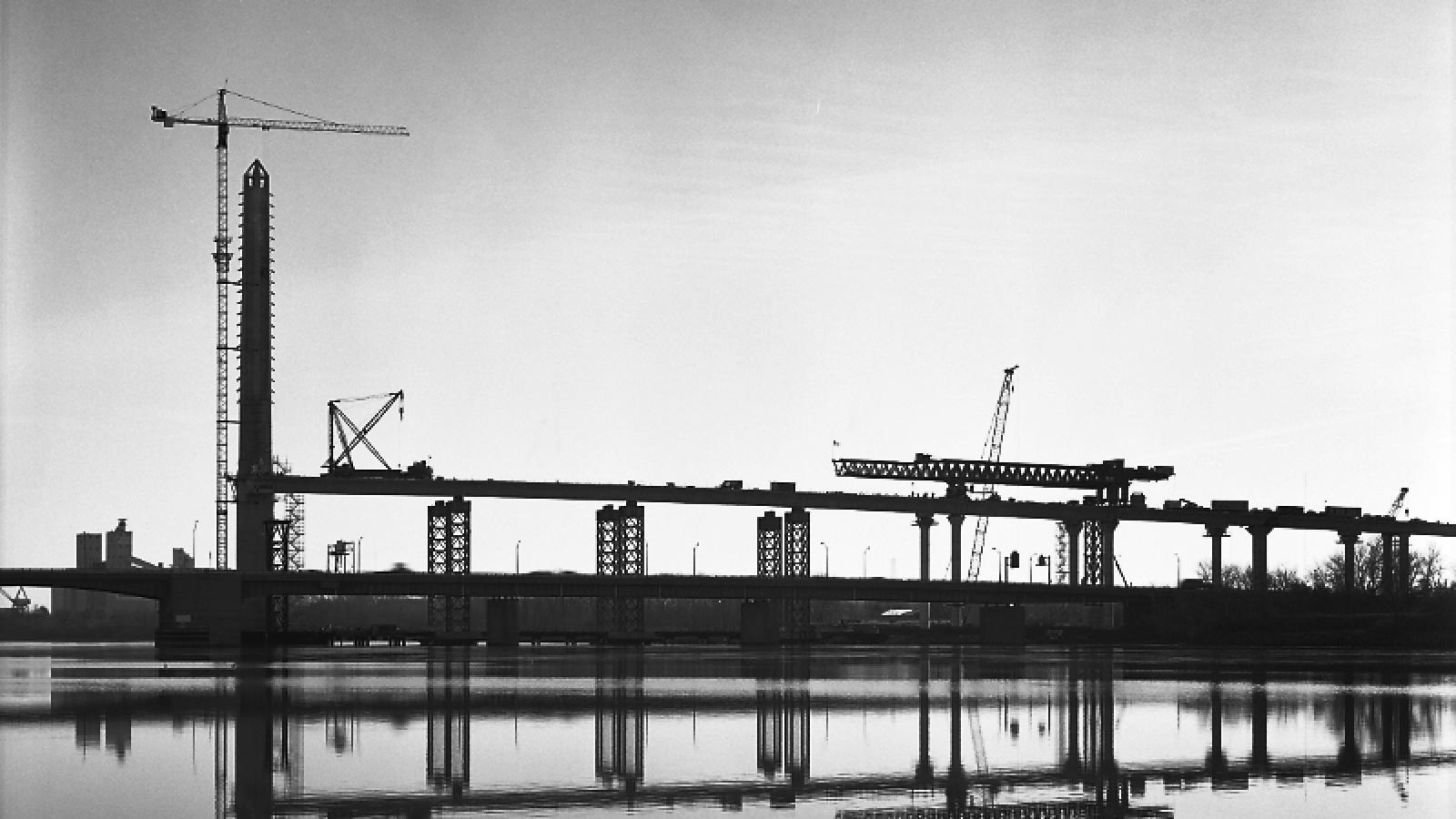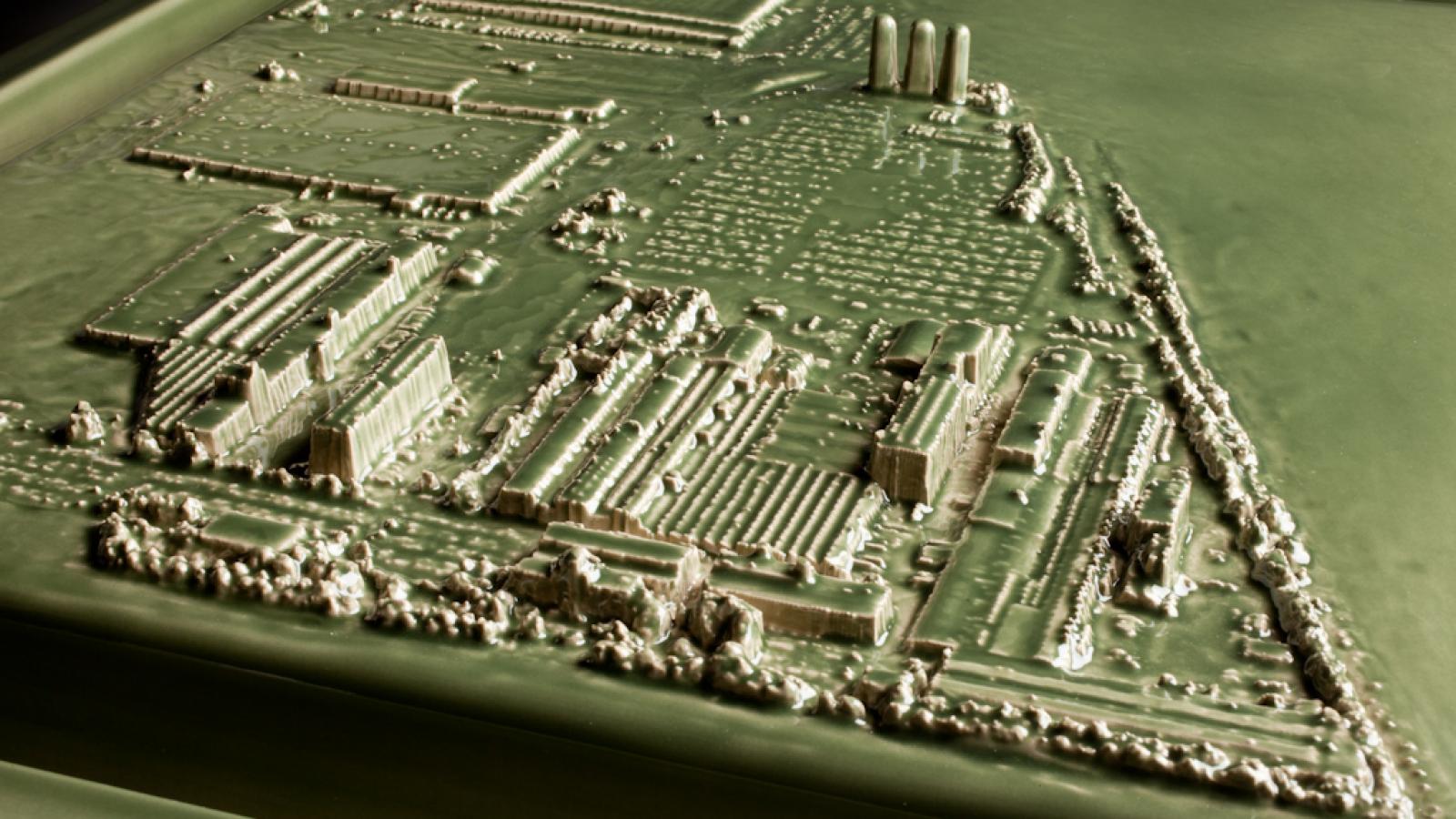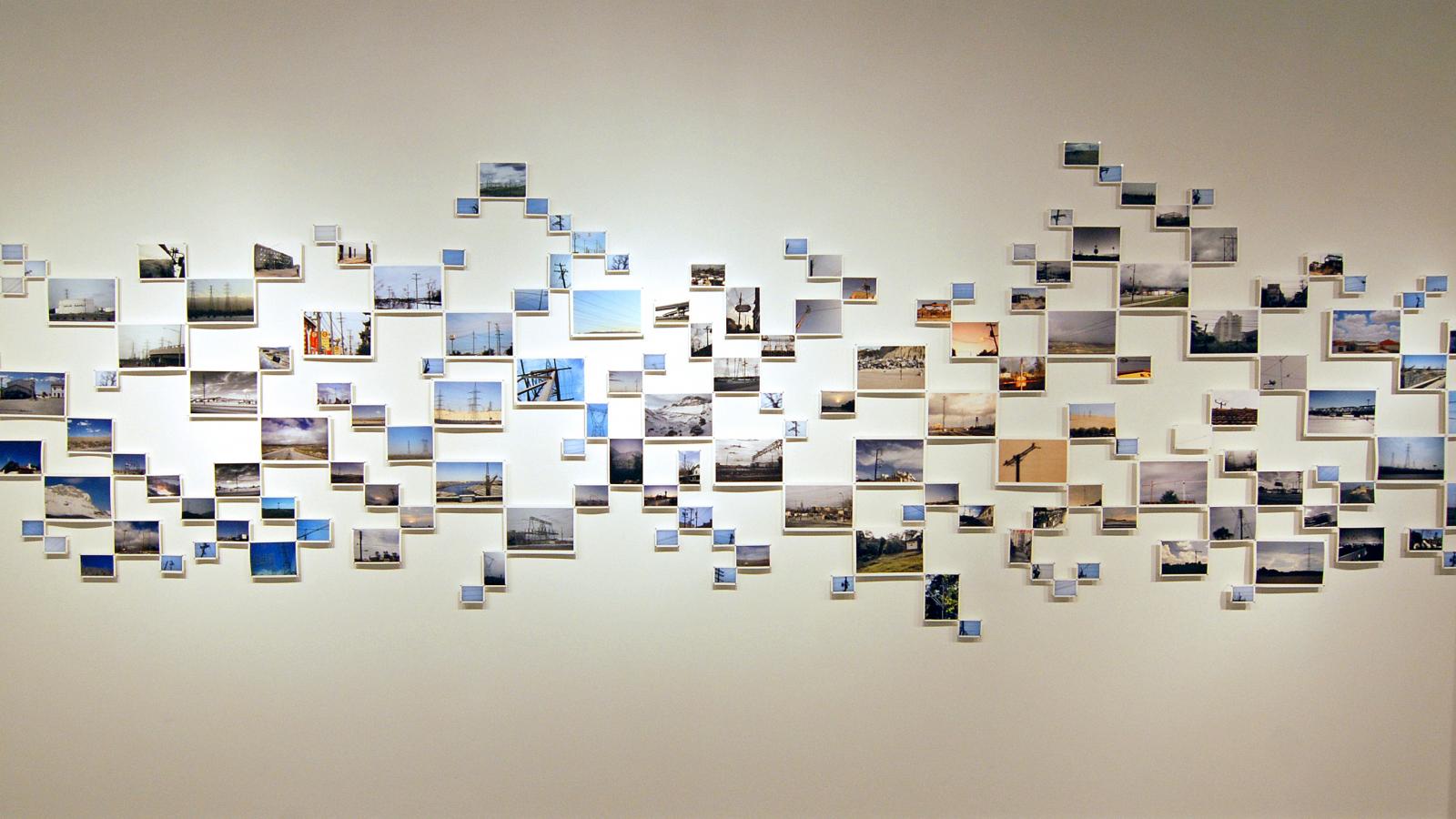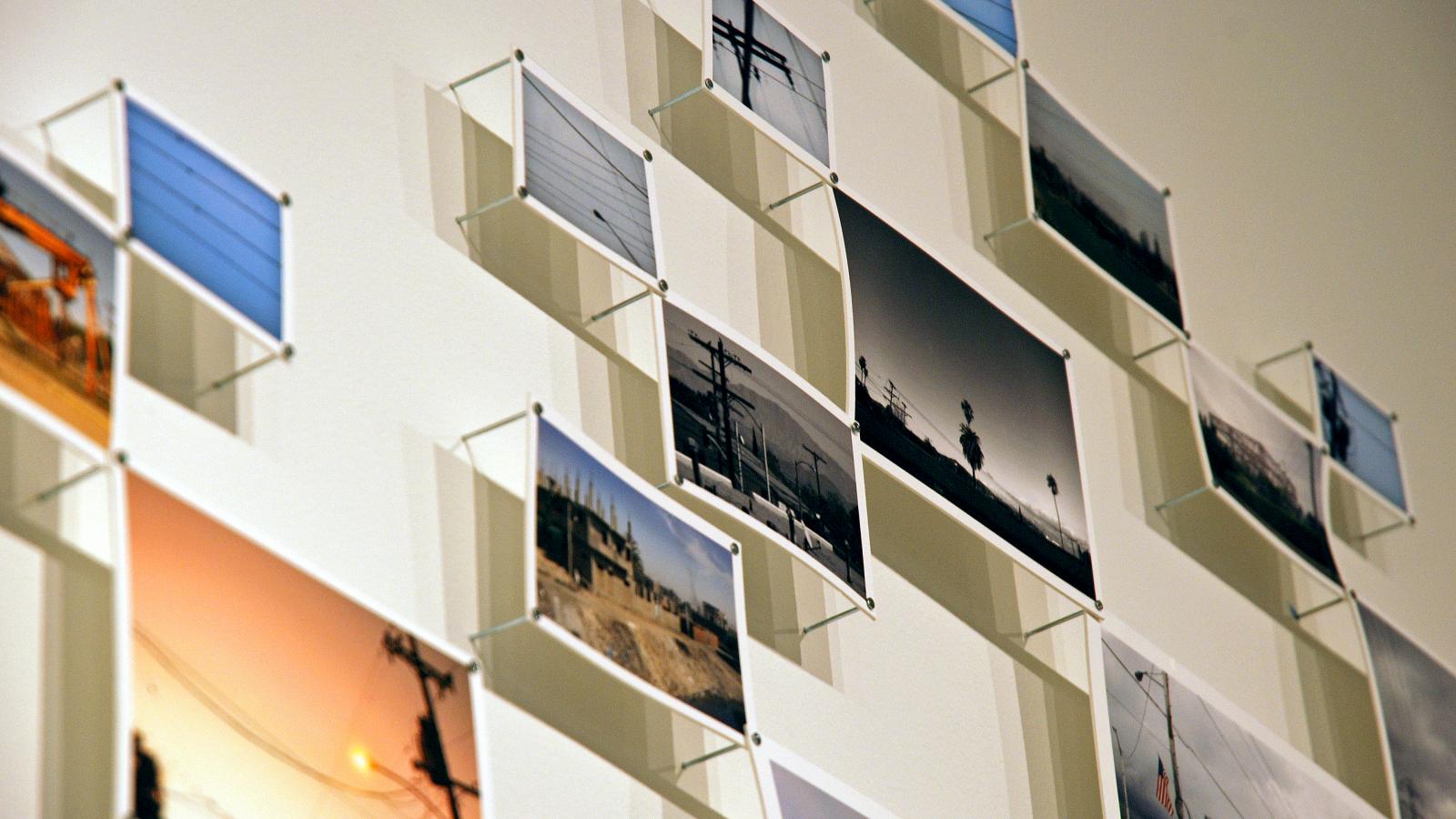Reception
Saturday | January 28 | 6 to 8pm
On the subject of Infrastructure, author Brian Hayes writes, “the common sights of the built environment—the power lines, water tanks, street lights, manholes, traffic signals, cellular-telephone towers—that we pass by every day and yet seldom really notice... many of us would go out of our way to avoid seeing them.” (1)
Tracing Lines follows power lines and infrastructure within the landscape; these lines are vital to our way of life, yet somehow they remain just outside our conscious focus. This exhibition explores themes of power, communication, energy, mobility, global desire, progress, consumption, and contemporary culture through photographic imagery and other works of art in an attempt to reveal deeper connections and support ongoing dialogue around these subjects.
The Tracing Lines exhibition is multi-faceted, involving photographic works, paintings, and sculptures as well as a collaborative group photographic project, and educational programming.
Website:
Formerly the Tracing Lines Project had a website located at: http://tracinglinesproject.com
Artists featured in the exhibition
The Center for Land Use Interpretation, Ed Charney, Alexandra Copley, Scott Dooley, cud (John Drury and Robbie Miller), Brian Hayes, John Javins, Courtney Jordan, Diana Kohne, Samantha Laffey, Jeremy Lepisto (courtesy of Traver Gallery), Kimberly McKinnis, Jeremy Oversier, Ralph Prince, Ed Ruscha (Courtesy of the Rare books and Manuscripts at the OSU Library), Rebecca Rothfus, Nadine Saylor, Hiromi Takizawa, Norwood Viviano and Sarah Lindley, Lynn Whitney and John Williams.
An additional copy of Every Building on the Sunset Strip and other works by Ed Ruscha are available to be viewed and read in the Rare Books and Manuscripts Collection at the OSU Thompson Library.
Curated by Aimee Sones and Jessica Larva and assisted by John Javins
(1) Hayes, Brian. Infrastructure : a field guide to the industrial landscape. New York: W. W. Norton, 2005.
Interactive Touch Tour Cart:
Drill bit animation video
Definition of drill bit:
A drill bit is a device attached to the end of the drill string that breaks apart, cuts or crushes the rock formations when drilling a wellbore, such as those drilled to extract water, gas or oil.
The drill bit is hollow and has jets to allow for the expulsion of the drilling fluid (or "mud") at high velocity and high pressure to help clean the bit and, for softer formations, help to break apart the rock. A tricone bit comprises three conical rollers with teeth made of a hard material, such as tungsten carbide. The teeth break rock by crushing as the rollers move around the bottom of the borehole. Drill bit well.

